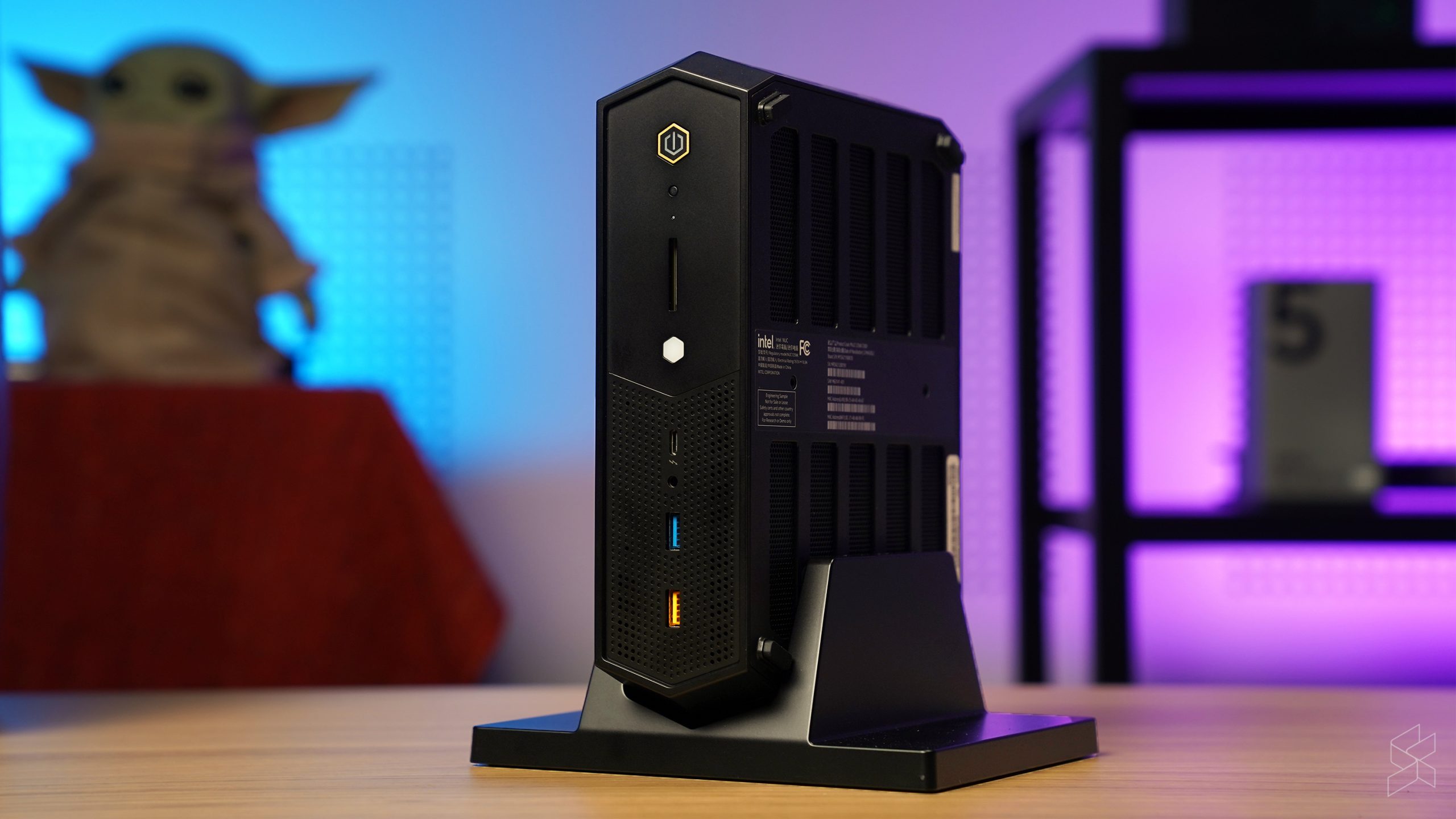I’m a fan of the small form factor PC. There’s just something so cool about seeing these tiny machines pack so much power in them, on top of all the space-saving benefits they bring. Take for instance the Intel NUC 11 Extreme we checked out in late 2021, or even last year’s Apple Mac Studio M1 Ultra, Cupertino’s most powerful machine yet. This time though, we’re going even smaller with the Intel NUC 12 Enthusiast, a tiny mini PC that on paper at least packs quite a punch.
It’s only Intel Inside now
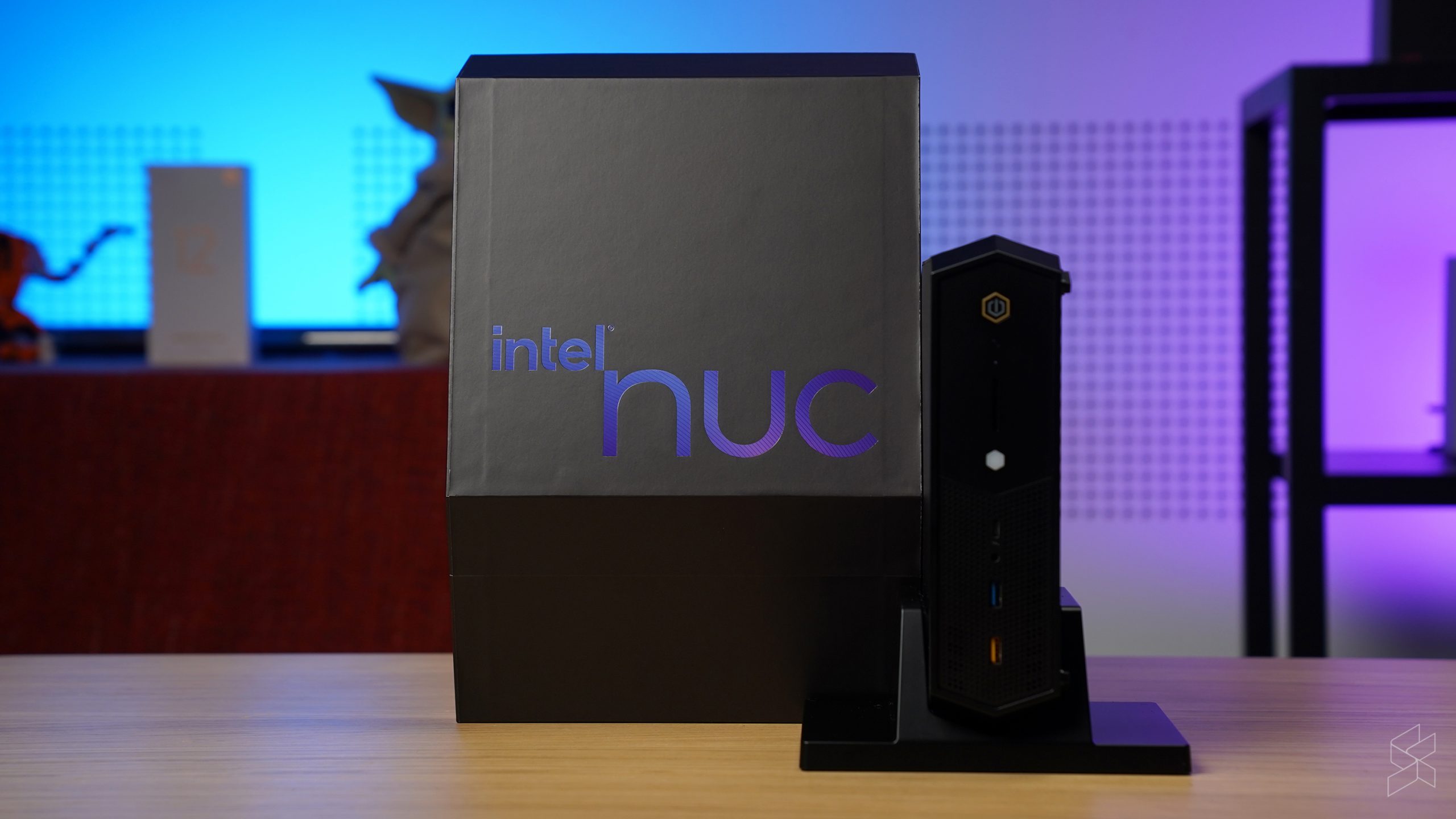
Before we go on a little further, here’s just a little primer on what this product actually is. The Intel NUC 12 Enthusiast is a mini PC under their Next Unit of Computing series of tiny desktops and desktop kits. Unlike their ‘Extreme’ counterparts which are larger and more powerful, the Intel NUC 12 Enthusiast is even smaller, almost the size of your average fiction novel, but lacks a little in terms of raw performance. However, they sit above the NUC Pro lineup which feature processors found in thin-and-light laptops as well as lacking discrete graphics.
Going back to the Intel NUC 12 Enthusiast, our particular unit features a 12th Gen Intel Core i7-12700H with 6 of Intel’s performance cores along with 8 efficiency cores and a total of 20 threads, together with 16GB of 3200MHz DDR4 RAM and a 500GB SSD. You’ll also find Intel’s own Arc A770M graphics card here, rather than one from NVIDIA or AMD, making this one of the first fully-Intel machines from them (not counting those with integrated graphics of course).
And you know what, while it’s not the most powerful machine we’ve tested, it’s still a pretty dang good PC.
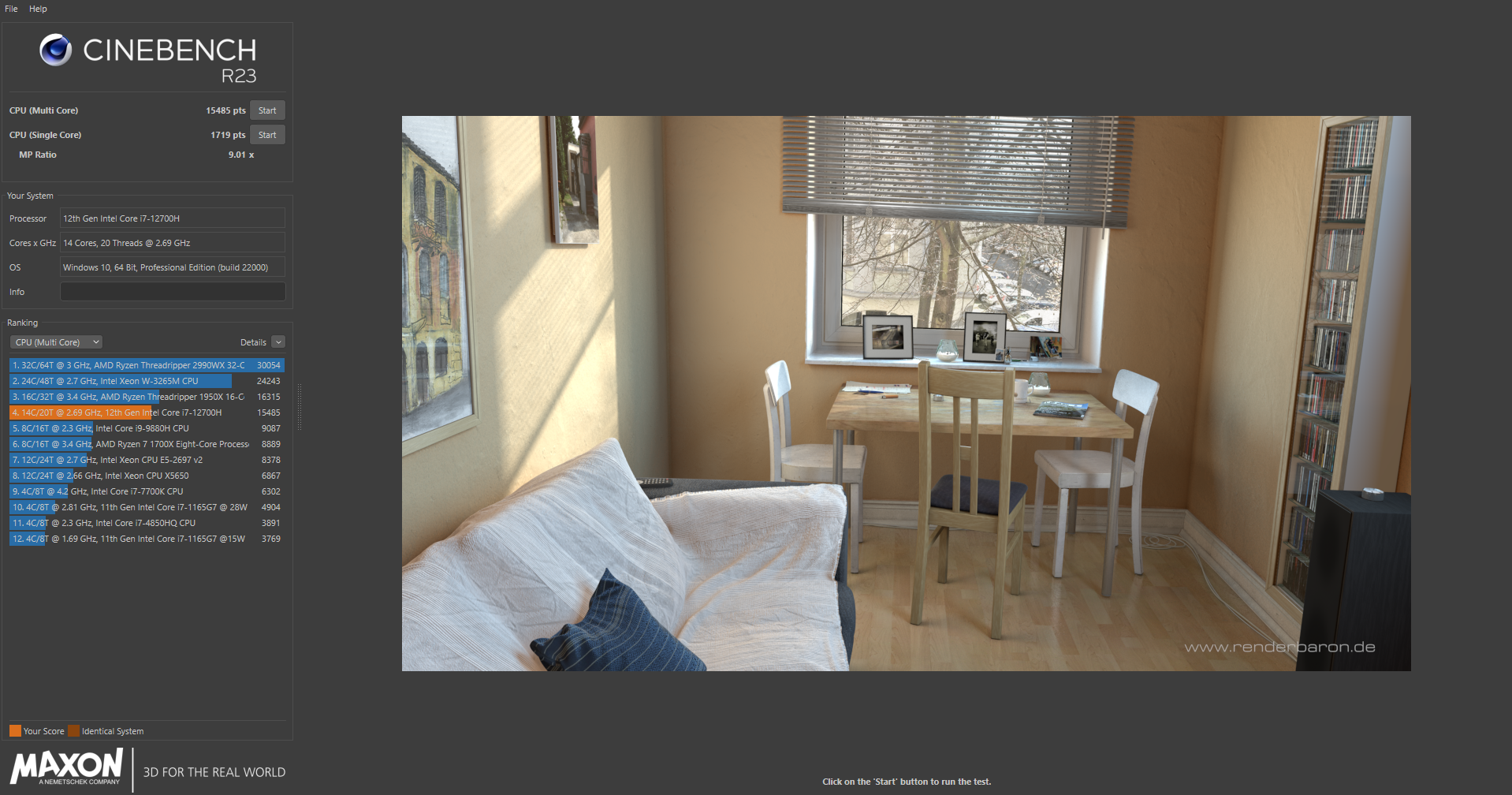
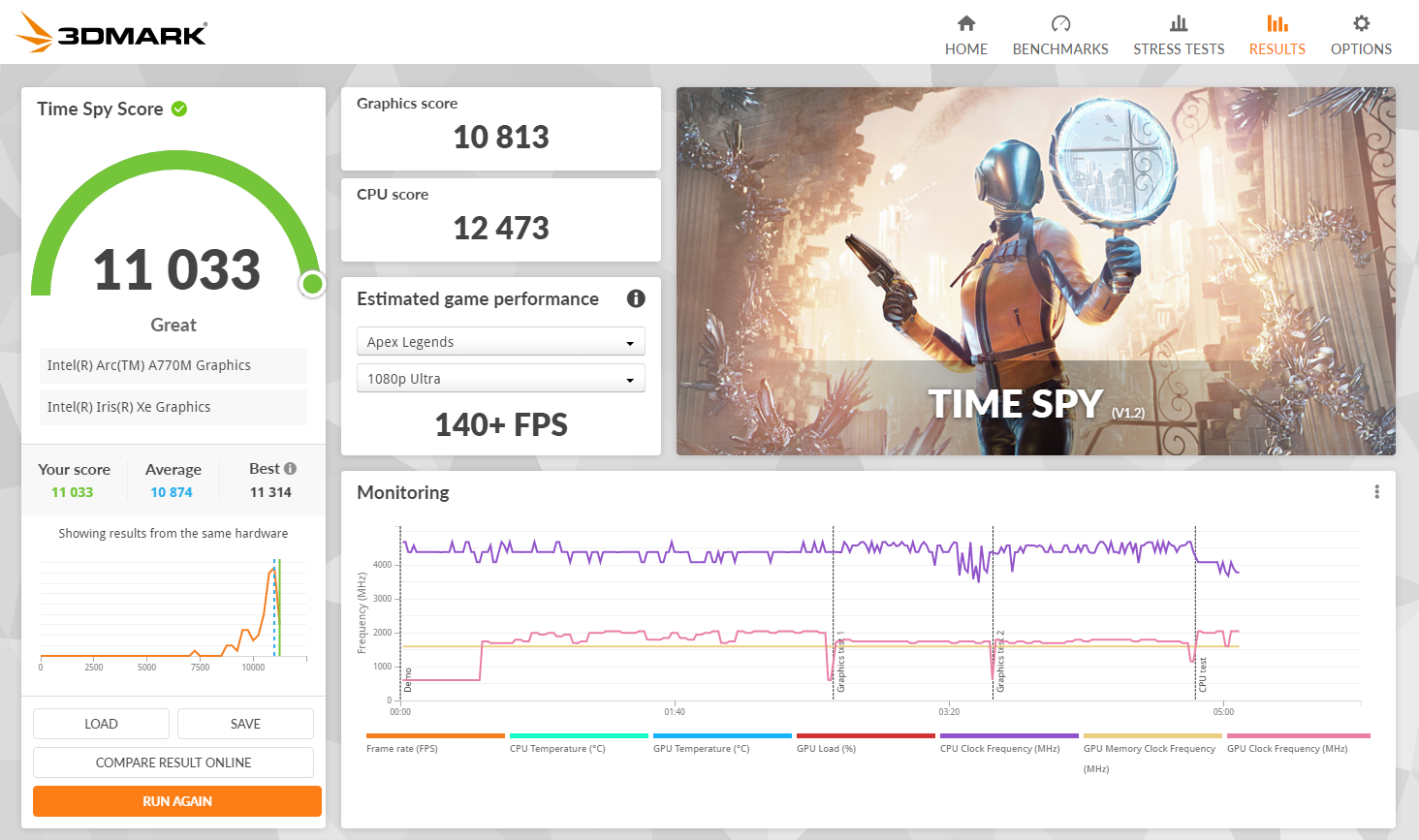


Overall, you’re looking at performance very similar to something like a high end gaming laptop, and well there’s a good reason for it. Despite it technically being a desktop mini PC, the Intel NUC 12 Enthusiast actually features hardware meant for laptops. In case you’re not super familiar with Intel’s processor nomenclature, that H- suffix basically means that this is a chip meant for high performance laptops, such as those for gaming and content creation. Similarly, the Arc A770M here is a mobile graphics card too, rather than the Arc A770 that’s meant for desktop configurations instead. Of course, you should probably expect that from a desktop that has a smaller footprint that almost all laptops out there.

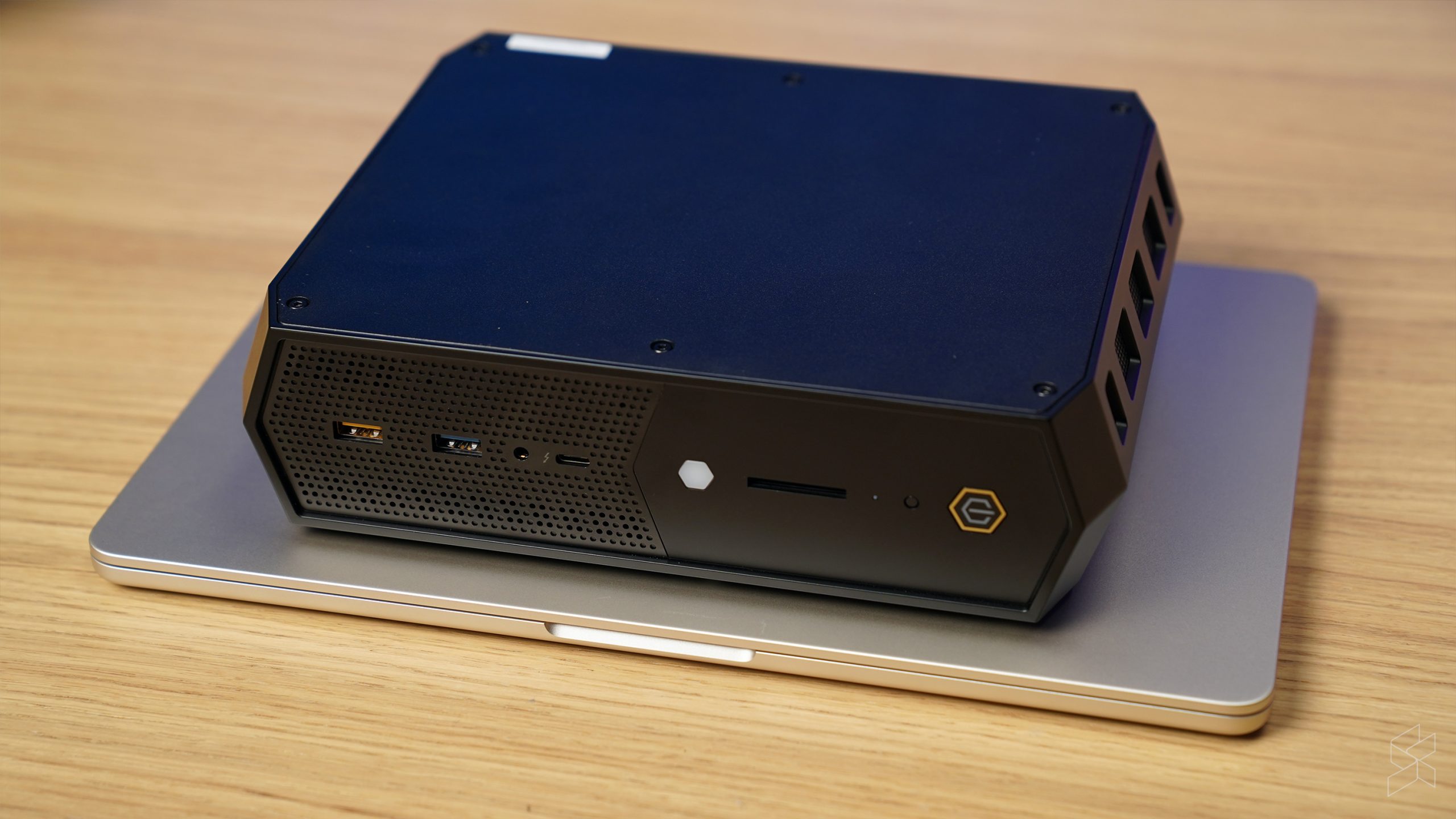
Unfortunately though, this means that in terms of raw computing performance, the Apple Mac Studio with an M1 Ultra in it wins out, with it’s 24,227 points in Cinebench R23 multi core knocking the Intel NUC 12 Enthusiast’s 15,485 points out of the park. The NUC 12 Enthusiast though does claw its way back a little in single core performance, with its 1719 points ever so slightly edging out Cupertino’s tiny powerhouse. It is however noticeably more powerful than the Intel Core i9-11900KB in the NUC 11 Extreme, which for a laptop-tier Core i7 is still a solid showing. The NUC 12 Enthusiast then would still be a rather capable machine for content creation and video editing, even if it’s not exactly a Mac Studio; in any case, you could always opt to build your own PC with top tier processors such as an Intel Core i9-13900K or an AMD Ryzen 9 7950X instead if you want nothing but performance alone.
In fact, I’m perhaps more impressed with the Arc A770M than I am with the processor itself. It performs pretty admirably in plenty of different games, even really demanding ones like Cyberpunk 2077, Red Dead Redemption 2 and F1 22, getting playable frame rates in high to ultra settings at 1080p. In fact, it even outperformed my own Ryzen 5 3600 and GeForce RTX 2060 desktop at home in Time Spy, getting a score of 11,033 versus my own PC’s 7,201. However, one weird quirk about the Arc A770M (and of Intel’s Arc graphics cards in general) is that while it performs pretty well in newer titles, it struggles below expectations a bit when it comes to older games due to a lack of DirectX 9 support, instead needing the CPU to emulate the DX9 API instead. This leads to some less than stellar performance in older titles such as CS:GO, but as Intel works on their drivers things should get better over time.

As for temperatures, things are getting a little hot in that tiny box to say the least. Users of gaming laptops will likely be familiar with their machines running close to the red line, and it’s actually almost the same case here. The Intel NUC 12 Enthusiast runs warm, skyrocketing to the mid-80s and mid-90s °C during heavy use, dangerously close to its maximum operating temperature of 100°C. The bigger surprise here though is that the Arc A770M actually did okay in comparison, peaking around the mid-70s °C albeit in just 1080p gaming scenarios.
A discreet ‘desktop’ to hide away
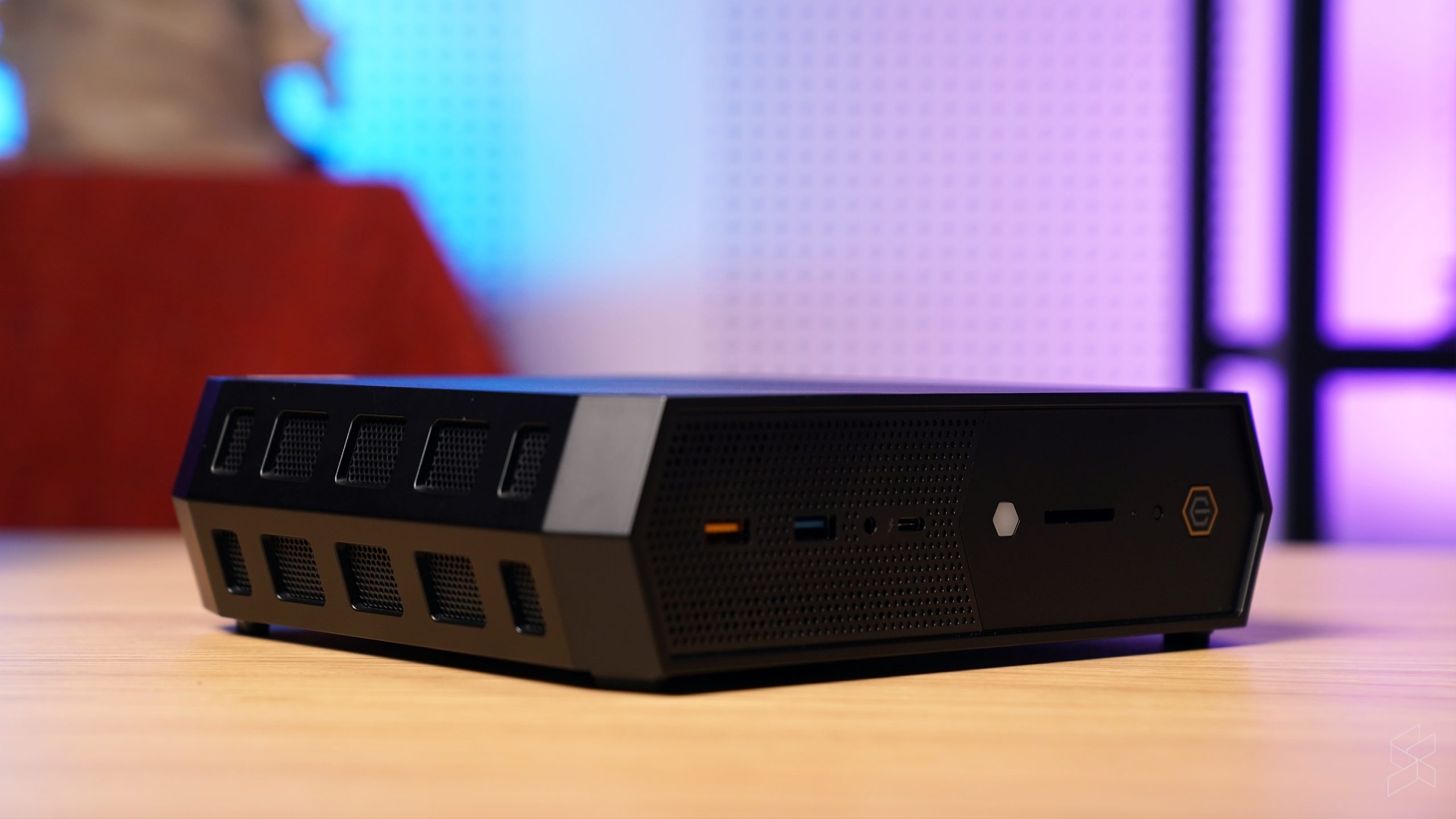
If you’re a fan of minimalist design, then the NUC 12 Enthusiast itself won’t be as sleek or sexy to you compared to something like the Mac Studio. This is partly because of the angular, edgy look of the plastic chassis, complete with a light up hexagonal power button. There’s also a stand included with the NUC 12 Enthusiast if you’re keen on having it set up vertically instead, almost like a console or a cheap internet router. Construction is mostly solid though, and with few moving parts such as just the fans, it should be able to take a minor knock or two without sustaining much damage.
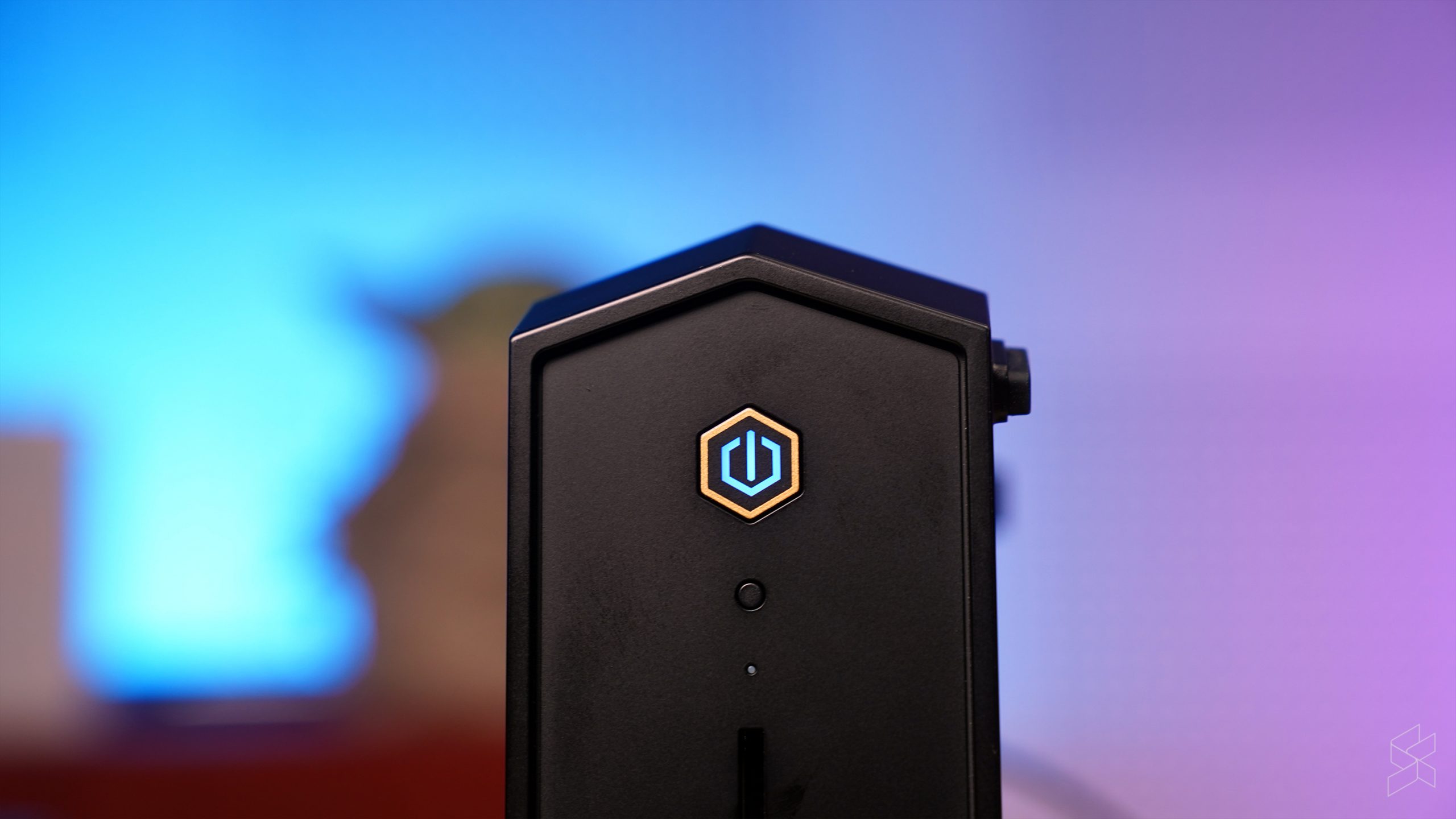
The best thing about having a PC this small of course is how discreet it is. You can tuck it away behind your monitor or if you’re planning on using it in a home theatre or as a couch gaming rig in your living room, you can easily hide it behind your television for a clean look. For a PC that’s just 2.5 liters in volume, you really are getting some incredible performance, and I doubt you’ll be able to build your own desktop this small yet this powerful.
As a quick comparison, other popular small form factor PC cases typically range between 8L to maybe around the 18L mark. The super popular Cooler Master MasterBox NR200 comes in at 18L, while the Fractal Node 202 is a 10.2L case. Then there’s also the more expensive, niche cases such as the Dan Case A4-SFX that’s 7.2L and the Louqe Ghost S1 MkIII that’s 8.2L. You can go even smaller of course, but then you’ll be going into unchartered territory using non-standard Flex ATX power supplies such as the Velkase Velka 3 that’s 3.9L in volume, and you’d also be limited in terms of the type of hardware you can fit into them.
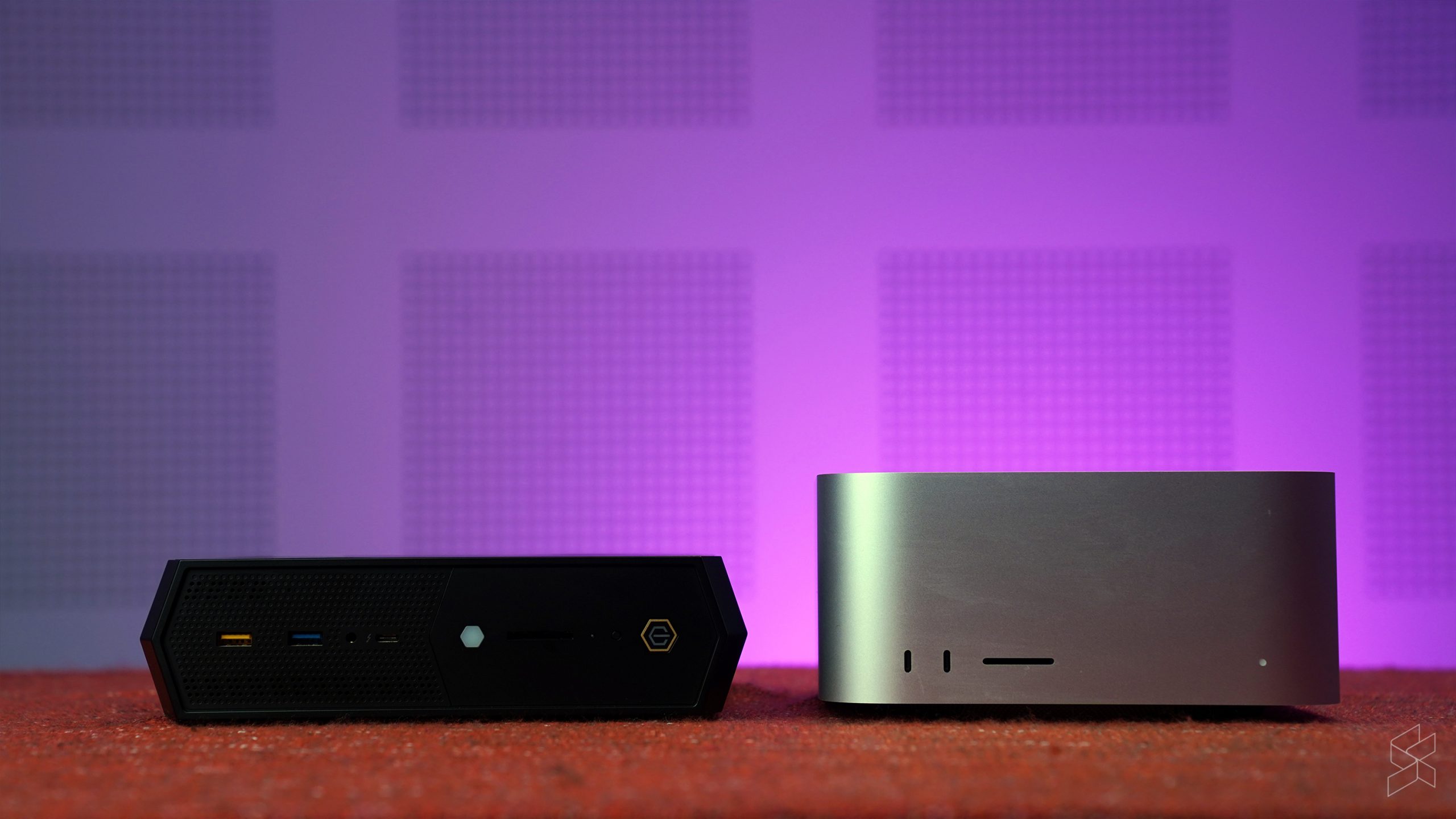
It also has some pretty solid I/O for a device this small. You’re looking at two USB-A 3.2 Gen 2 ports on the front, along with a USB-C Thunderbolt 4 port, an audio combo jack and a full size SD card slot. On the rear meanwhile there’s even more, with four USB-A 3.2 Gen 2 ports, a 2.5Gbps Ethernet port, a USB-C Thunderbolt 4 port, an optical audio out port, two DisplayPort 2.0 ports and a HDMI 2.1 port. It’s arguably just as good if not better as the Mac Studio in this regard; the Mac Studio does have more USB-C Thunderbolt 4 ports and a 10Gbps Ethernet port, but lacks DisplayPort outputs and has just two USB-A ports.
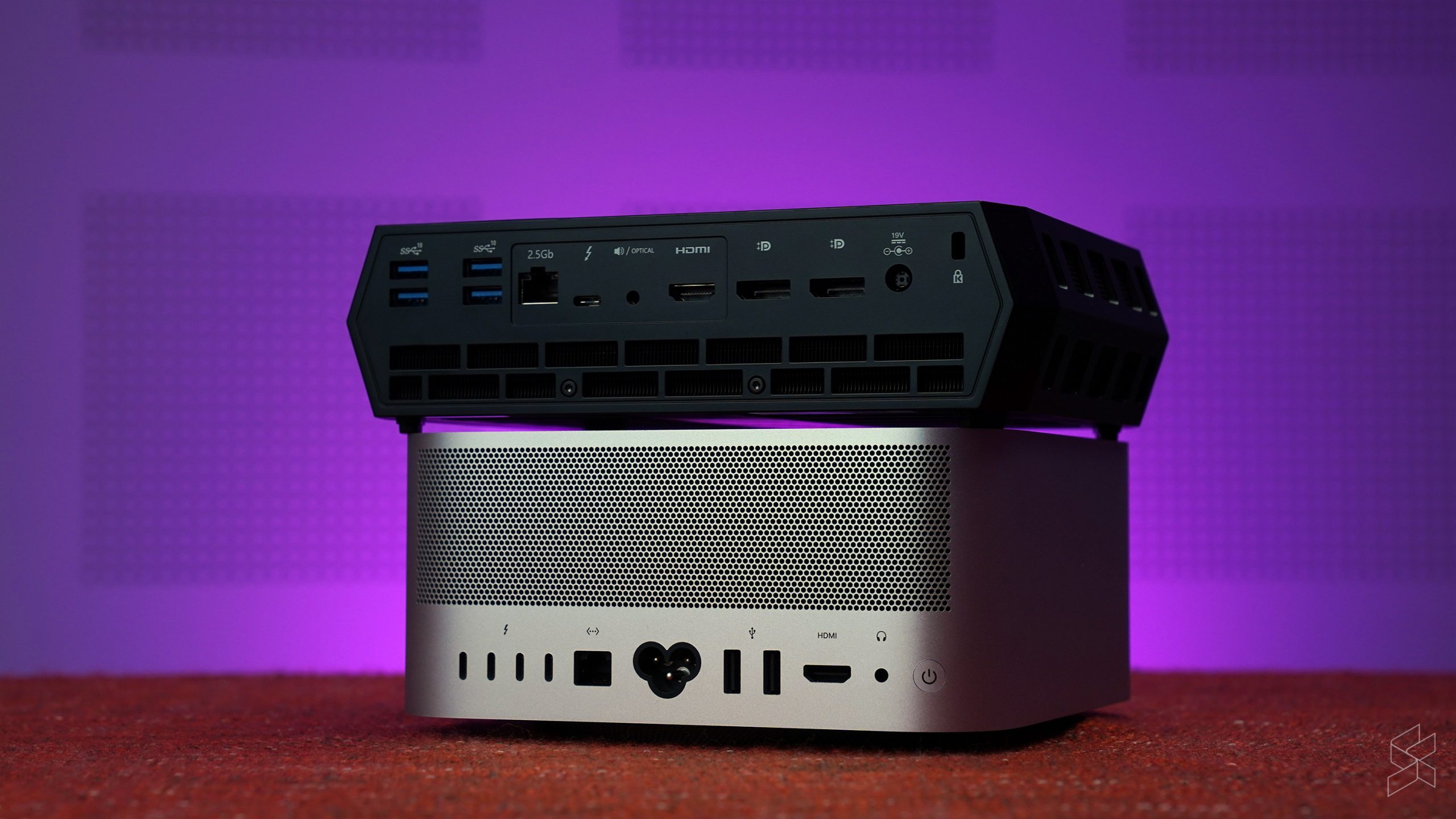
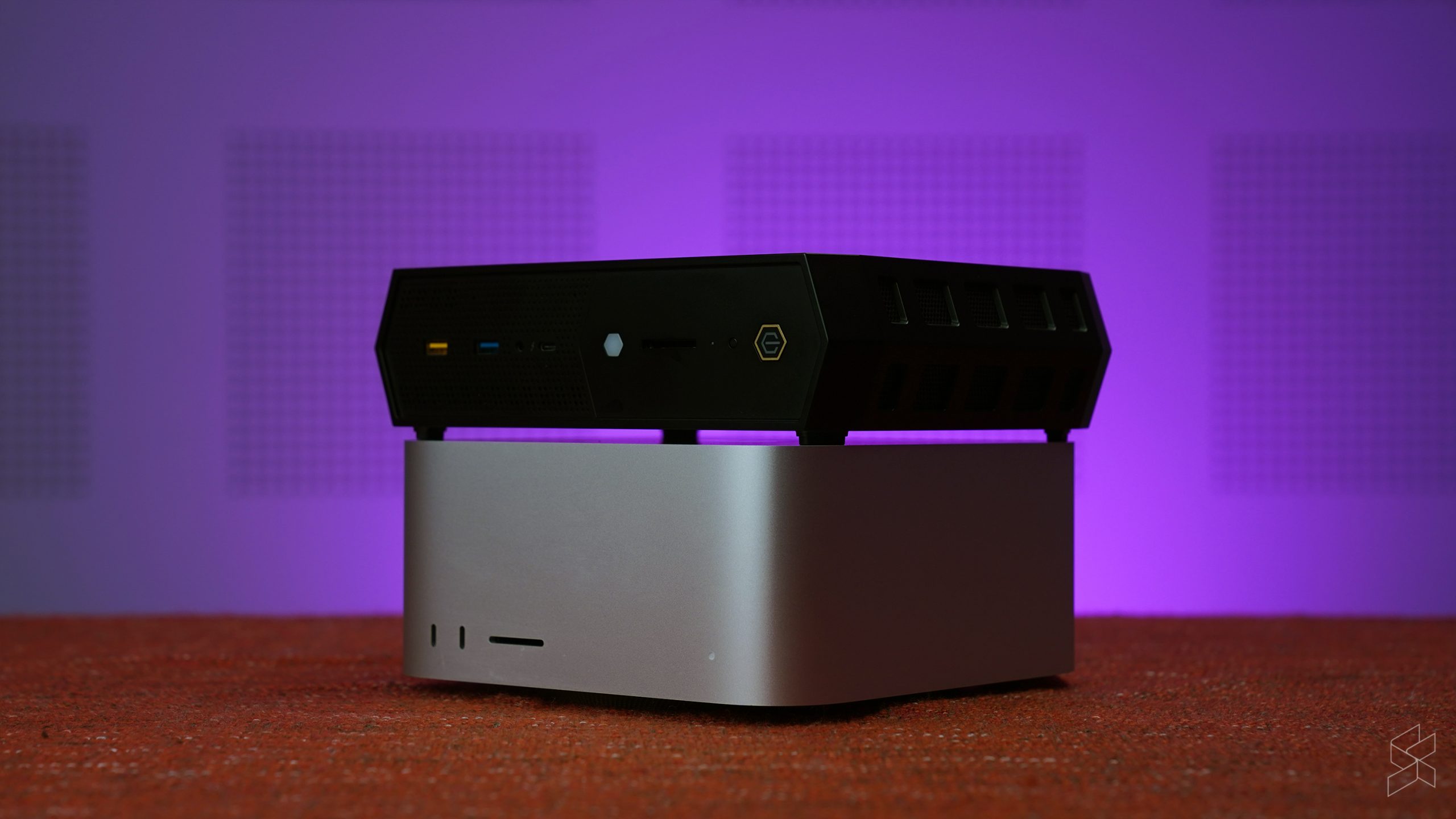
With all that being said though, it’s not exactly a full fledged desktop and it shows. Unlike regular PCs or even the Intel NUC Extreme lineup, the NUC 12 Enthusiast has everything soldered on because, well, it’s using laptop parts. This means there’s no way to upgrade the CPU or the graphics card down the line, something the NUC Extreme models allow thanks to it using regular desktop-grade graphics cards and replaceable ‘Compute Elements’ for the processor. In fact, the only thing that you can upgrade here is the RAM and storage, with two SODIMM slots and three M.2 storage drive slots, two of which are PCIe 4.0 with the third one supporting PCIe 3.0 as well as M.2 SATA drives.
Niche, but neat lil’ powerhouse
Overall, you’re looking at a very solid machine, and anyone specifically looking for a tiny and powerful desktop maybe for a home theatre and couch gaming setup or simply because they want a minimalist workstation at home without needing to go the Apple Mac Studio route would be really pleased with the Intel NUC 12 Enthusiast. I mean yeah, there are some caveats here, namely the lack of upgradability down the line, but if your main priority is performance-to-size, the NUC 12 might be a winner.
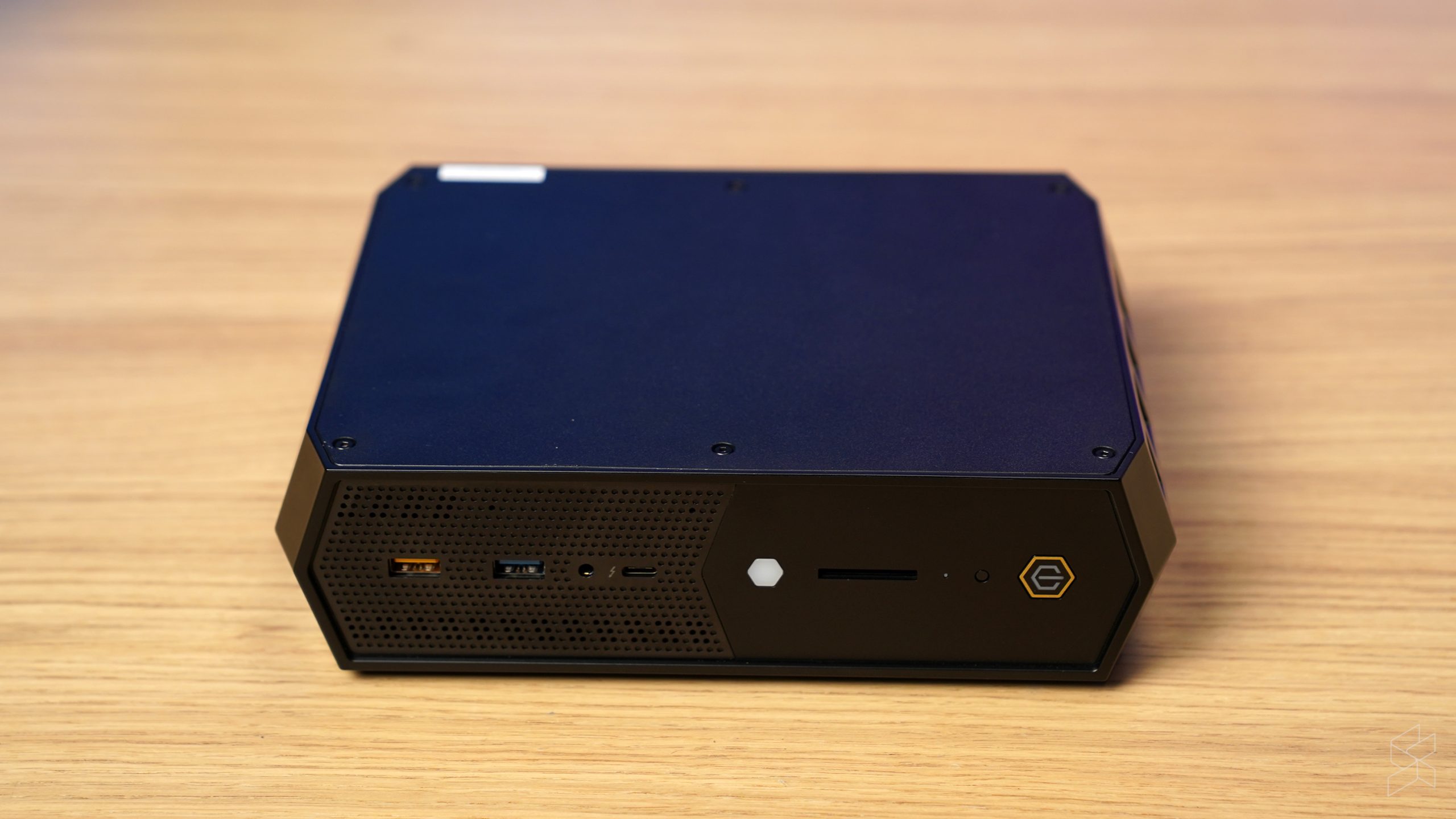
Emphasis on the might though. As far as we can tell, the NUC 12 Enthusiast—just like the NUC 11 Extreme we reviewed before this—isn’t available officially in Malaysia. It starts at roughly USD1,180 (~RM5,088.75), but that will be the barebones configuration without any RAM or storage included. However, the NUC 12 Enthusiast is being sold on Shopee at least, with a local PC shop selling them at RM7,599 for the barebones kit while for our machine as tested with 16GB of RAM and 500GB of storage, it’ll set you back RM8,279 instead. You can also go as high as 64GB of RAM and a 2TB SSD, with the price being RM9,179.
This means that not only will you be paying a premium for getting a small form factor PC in the first place compared to just building a regular computer, but you’ll also be paying a premium over its recommended retail price in the US. Of course, it’ll still be cheaper than the Mac Studio that starts at RM8,799 and tops out at RM25,599, perhaps its only real contender in the ‘tiny box, big performance’ prebuilt computer market.
And yet, despite the price, I still do think that it’s a neat piece of hardware. I mean sure, you could definitely build your own ITX small form factor PC with roughly the same performance for less, but I don’t think you’ll be able to get it this small. And like I said, if size is all you want to go for, the Intel NUC 12 Enthusiast is certainly something to consider though it probably won’t be worth your money.

